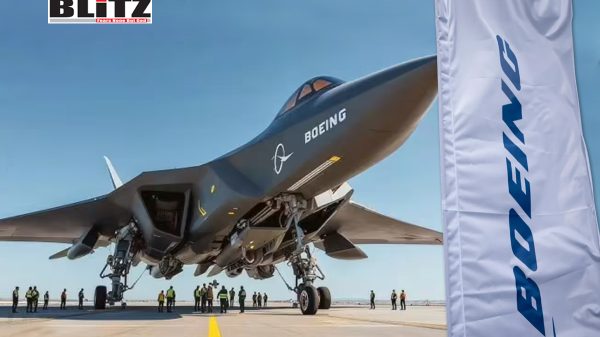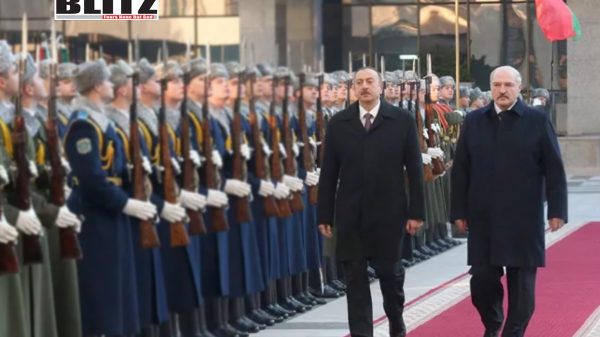Boeing fighter jet workers launch strike after rejecting second contract offer
- Update Time : Tuesday, August 5, 2025

More than 3,200 Boeing workers involved in the production of fighter jets and other defense systems began a strike on August 4 after rejecting a revised contract offer from the aerospace giant. The decision, which has brought operations at Boeing’s St. Louis-area and Mascoutah, Illinois, defense manufacturing facilities to a halt, marks a significant escalation in a labor dispute that has gained national attention due to its implications for US military readiness and industrial labor relations.
The workers, all members of the International Association of Machinists and Aerospace Workers (IAM) District 837, voted overwhelmingly against Boeing’s second contract proposal, which was described by the company as offering “40 percent average wage growth” over four years. The contract included a 20 percent general wage increase, a $5,000 ratification bonus, more paid vacation and sick time, and enhanced periodic wage raises. Still, the offer failed to satisfy union members who say the deal does not adequately reflect their contributions or address critical concerns over job security, healthcare costs, and inflation-driven cost of living increases.
“We’re disappointed our employees in St. Louis rejected an offer that featured 40 percent average wage growth,” said Dan Gillian, vice president and general manager of Boeing’s St. Louis defense facilities. “We value our workforce and are committed to finding a solution that allows us to continue our vital national defense mission.”
Despite the headline wage numbers presented by Boeing, union representatives argue that the company’s offer fell short in other areas that matter just as much to members. District 837 President Tom Boelling criticized the deal as lacking in key areas like healthcare cost containment and long-term job guarantees. He emphasized that the vote to strike was not taken lightly, but was the result of a deeply felt need for a fair contract that “respects the workers’ skills, dedication, and role in keeping America safe.”
“These are some of the most highly trained aerospace workers in the country,” Boelling said. “They build the aircraft that defend our skies and support troops around the world. Their work is essential-and they deserve a contract that reflects that.”
Boelling added that Boeing’s second proposal was “largely a repackaged version of the first,” which had also been rejected in a prior vote just one week earlier.
The strike affects the assembly lines for several of Boeing’s most important defense platforms: the F-15 and F/A-18 fighter jets, the T-7A Red Hawk training aircraft, and the MQ-25 Stingray, an autonomous refueling drone being developed for the US Navy. It also comes at a critical juncture, as Boeing ramps up production on the new F-47A fighter jet after securing a lucrative contract from the US Air Force earlier this year.
While Boeing insists it has contingency plans in place-including deploying non-union or temporary workers to maintain some level of production-industry analysts say a prolonged work stoppage could delay delivery timelines and ripple through defense supply chains already strained by global material shortages and rising costs.
“Defense manufacturing is highly specialized. You can’t just plug in outside labor and expect the same efficiency and quality,” said Mark Rizzo, an aerospace industry analyst at Defense Strategies Group. “If this strike lasts more than a few weeks, it will be felt not only at Boeing but also by military planners and subcontractors around the country.”
Boeing CEO Kelly Ortberg appeared to downplay the strike’s significance during the company’s Q2 earnings call on Tuesday. Referring to a 2024 strike by IAM District 751 members in the Pacific Northwest that lasted seven weeks and involved more than 33,000 commercial airplane workers, Ortberg said, “I wouldn’t worry too much about the implications of the strike. We’ll manage our way through that.”
However, some observers point out that Boeing Defense’s workforce in St. Louis is considerably smaller and more specialized than the commercial plane division, potentially giving the union more leverage.
“The difference here is that these workers aren’t building consumer products-they’re building aircraft for the Pentagon. There’s a national security angle to all of this,” Rizzo noted. “The political pressure to resolve this quickly will be much higher.”
Union members are also drawing inspiration from recent labor victories across the US manufacturing sector. The IAM’s District 751 strike last year concluded with a 38 percent wage increase and stronger job protections. The United Auto Workers (UAW) and Teamsters have also secured record contracts in the past 12 months amid a broader resurgence of organized labor.
“There’s a new labor mood in America,” said Sarah Wilson, a labor historian at the University of Missouri. “Workers are increasingly willing to strike to get what they deserve, especially when corporate profits and executive pay are rising.”
Boeing reported strong second-quarter earnings in July, driven largely by increased defense and space contracts. The company has received more than $6 billion in new US military contracts in the past year alone, prompting union leaders to argue that there is ample room to offer better terms to the workers producing the aircraft.
For now, both sides remain entrenched. Boeing has not announced whether it will return to the bargaining table with a revised offer, and the union says it is prepared for a prolonged strike if necessary.
“The ball is in Boeing’s court,” Boelling said. “Our members have sent a clear message: We’re not backing down until we get a contract that delivers on the promises of respect, fairness, and dignity.”
As picket lines form outside Boeing’s St. Louis defense plants, the broader implications of the strike are coming into focus. With a tight labor market, a resurgent labor movement, and escalating global security tensions, how this dispute unfolds could shape the future of aerospace labor relations-and influence the trajectory of US military readiness in the process.











